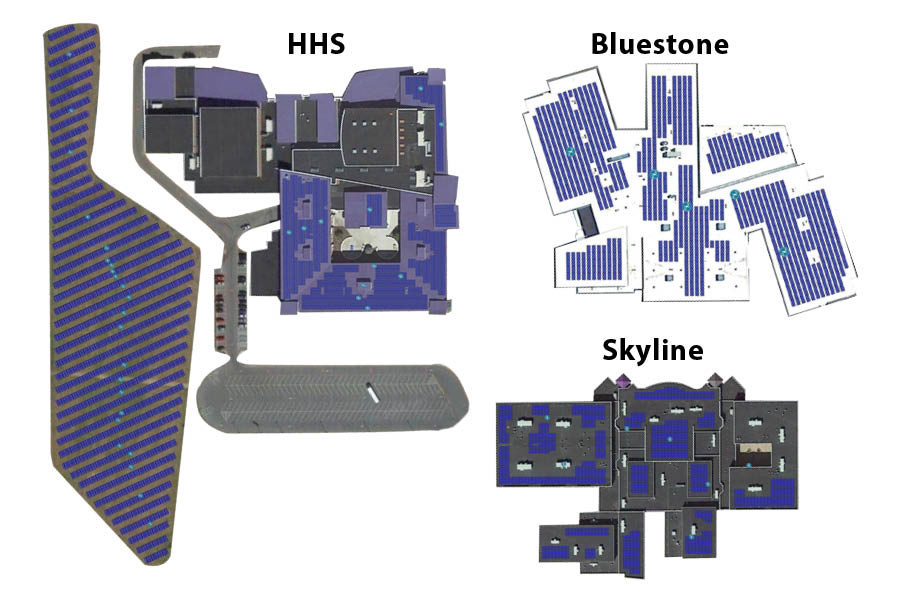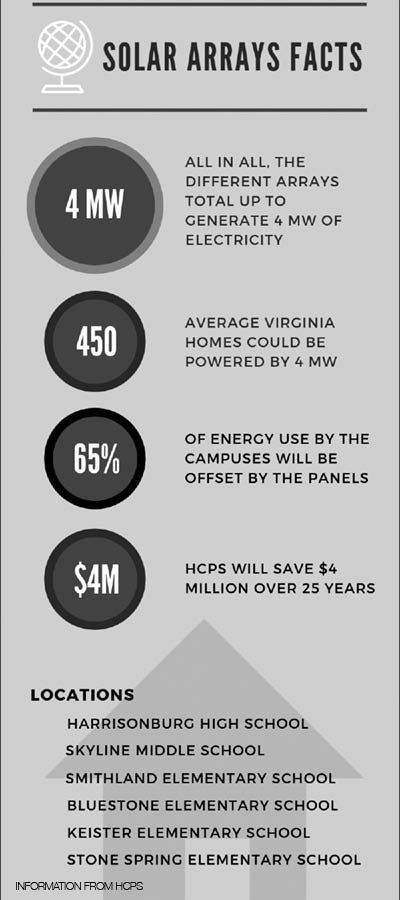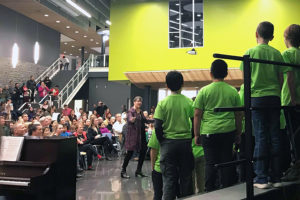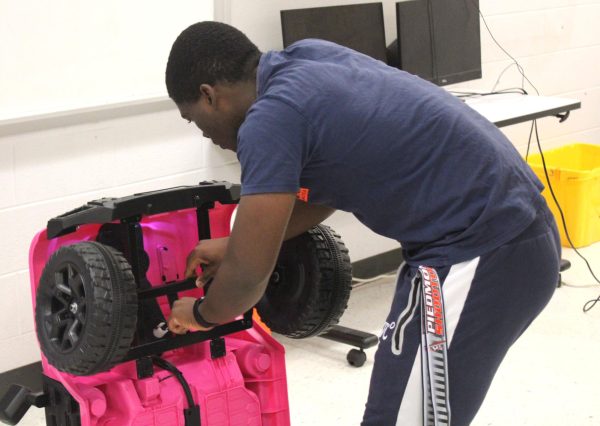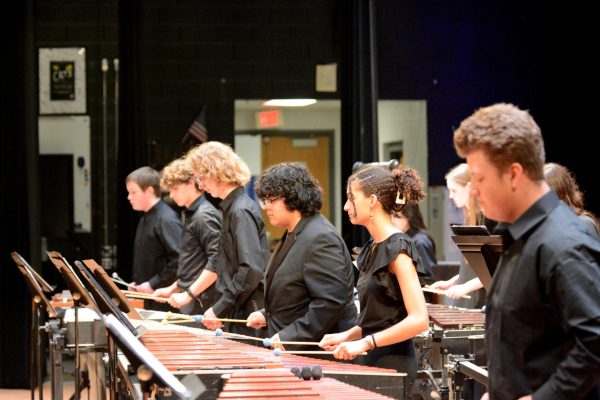School board plans solar installations
Photos courtesy of Secure Futures
A 1.74 megawatt (MW) system is planned to be installed at HHS. Secure Futures used a program called HelioScope to digitally plan the solar arrays that they are proposing to the school board. Bluestone Elementary would install a 296 kilowatt (KW) system, and Skyline Middle would implement a 501KW system. There are also plans for more ground installations at the high school, Keister and Stone Spring Elementary schools.
Bluestone Elementary School is the most expensive public school in Virginia per square foot, but during the design phase, its price tag was initially much more. The original design included a city-owned solar panel array that would power the entire school, detaching it from the grid. School board chair member Deb Fitzgerald was a part of the plan from the design phase.
“The last person I know to have brought [solar panels] up was Vice Chairman Andy Kohen. When Bluestone Elementary School was in the design phase, he suggested that the city should buy solar panels and put them on the school. That was one of the things that got cut because of the limited price tag,” Fitzgerald said.
The plan for the city to own and operate the panels wasn’t financially feasible, but at the beginning of 2018, a new plan emerged on a much larger scale to solarize all of the schools.
“When the board got constituted a couple of years ago, we thought about solarizing the schools using a different approach; that is having [the solar panels] owned, operated and maintained by somebody else so we don’t have to spend the money to get them,” Fitzgerald said.
Because the city wouldn’t be making a payment for the installations, the school board has the authority to sign the contract for installations without the discretion of city council.
“We don’t have to bring it to city council for any sort of approval because it’s not a capital expenditure. It’s not like we’re buying a new boiler or a new HVAC system or anything like that. We’re signing a contract with a company and getting electricity from their solar panels that they will install on the schools,” Fitzgerald said.
The school board put out a request for proposals and three solar installation companies responded. The general premise of their deals was that they would install, operate and maintain the panels and sell the electricity generated to the schools. Out of these three companies, the school board agreed to pursue the solarization possibility with Secure Futures, a company based out of Staunton.
“We expect to be able to save electrical costs. If you look at what HEC is currently charging us for electricity and what Secure Futures predicts our costs to be under this new plan, we’re going to be saving quite a bit of money. There’s too many moving pieces right now to put an exact dollar value on the transition,” Fitzgerald said.
The panels’ locations on the school varies due to the vulnerability of older roofs to experience issues under the several thousand pound burden of solar installations.
“[Roof installations] are going to be limited to roofs that are relatively new. The plan right now has them on the roof of Bluestone and part of HHS. Most of the rest of them are ground arrays,” Fitzgerald said.
All in all, the suggested plan for the installations will be a four megawatt system. Four megawatts is enough to cut the utility bills of the schools but not detach them from the grid entirely.
“We would still be paying some monthly utility bills to Harrisonburg Electric Commission (HEC) because we don’t want to unplug from the grid completely. The solar panels will just offset some of the electric bills for the schools. For Bluestone, it will offset the costs quite a bit because [the school] is so energy efficient, but for other schools, not so much,” Fitzgerald said.
The reduction in the utility bills has caused some tension with HEC. The municipally-owned not-for-profit utility would lose revenue if the panels were installed. Secure Futures’ lawyers have held meetings with HEC, negotiating and compiling a contract that all three parties can agree upon.
“HEC is kind of caught in a world right now where the energy market is transforming. People are becoming more concerned about how their energy is produced. For the first time in my memory, maybe for the first time since HEC was created in the 1950’s, HEC is undergoing some examination,” Fitzgerald said. “They’re getting examined on how they set their rates, on how open they are to solar production from schools and institutions and they’re getting attention on how their board is constituted. It’s hard. It’s good work, but it’s hard work and so nobody is expecting this to be easy or fast.”
HEC is also in the middle of a thirty-year contract with Dominion Energy. The binding nature of the contract makes it difficult for HEC to incorporate the solar panels into the city’s grid. Fitzgerald expects it to be quite some time before an agreement is reached.
“This is hard. This is going to be bumpy to get to the end of this,” Fitzgerald said. “We know it’s going to take a little bit of time to get to the point where we can all sit down and sign a contract. I’m expecting this to take a while. This is going to take a few more weeks before we’ve got it all figured out. The important thing to do is to communicate with all parts of the community about it.”



